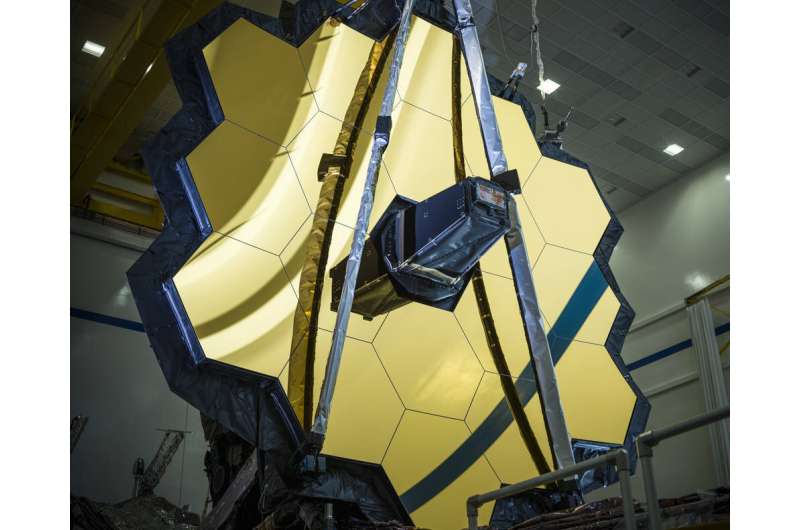Giant NASA telescope to open new vistas of space

A giant telescope to be launched into space this week will be the biggest ever and will orbit around the sun about 1 million miles from the Earth. It will be able to capture the farthest depths of the universe ever achieved and could tell us secrets about the origins of the universe from 13.5 billion years ago, said a Texas A&M University physicist.
Nicholas Suntzeff, who has been involved with space research for 30 years and spent 20 years in Chile, where he helped co-discover dark energy, said that when NASA, the European Space Agency and the Canadian Space Agency launch the James Webb Space Telescope (JWST), named after a former NASA administrator, from French Guiana on Dec. 24, it should provide answers to some of space's biggest mysteries.
The JWST will be 100 times more powerful than the Hubble Space Telescope, which was launched in 1990 and has provided amazing images as it orbits about 340 miles above the Earth.
Almost 30 years in development and with a price tag of $9.7 billion, the JWST has a mirror system made of 18 hexagonal mirrors tiled together to form a reflecting surface as large as a tennis court. Astronomers will be able to see light from the time when the universe was only one percent of its present age, a time they call "cosmic dawn."
The telescope will be orbiting around the sun, not the Earth, and when orbiting its temperature shields will face ranges of minus-388 degrees on its cold side to 180 degrees on the hot side. These positions are what scientists refer to as the second Lagrange point, or L2, meaning its position in relation to the Earth.
"The JWST will orbit around the second Lagrange point," Suntzeff said. "We know that L2 is not always stable, so the telescope will orbit around this mathematical point.
"They also want JWST to orbit such that its heat shields are always illuminated by the sun, moon and Earth. This sounds weird because these are the objects that make it hard to observe. However, with the shield the spacecraft will be protected from light from these objects. And if those three objects are always on the other side of the shield, the temperature on the hot side of the shield will remain pretty constant."
Suntzeff said one unique aspect of the JWST is that it will use infrared light images, which allow astronomers to look more clearly into space and bypass the many dusty and hazy areas of the universe.
He said that NASA has a good explanation of the position on its website.
Provided by Texas A&M University



















